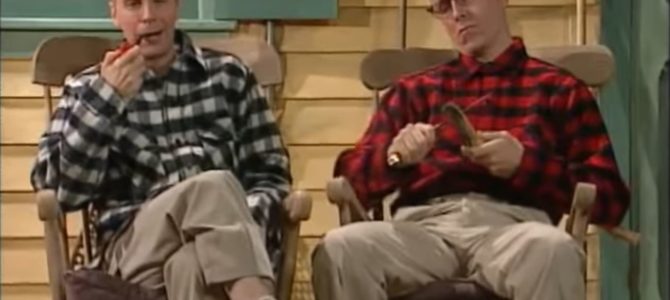I’m about two years late to “Too Funny to Fail,” Hulu’s very random retrospective on the long-forgotten failure of “The Dana Carvey Show.” The film’s schtick is obviously its questionable relevance, but charting the eccentric series’ demise is even more relevant now than it was in 2017.
Panned at first by critics, Carvey and his merry band of not-yet-famous superstars steadily built a niche following over their seven-episode run. With 20 years’ distance, it boggles the mind that a show featuring Steve Carell, Stephen Colbert, Louis C.K., and Carvey at the height of his fame could crash and burn so spectacularly. But the reason has never really been much of a mystery. What killed “The Dana Carvey Show” in 1996 is precisely what would save it in 2019.
The already splintered streaming landscape is about to crack wide open. Disney+, set to launch this fall, is competing with Netflix and Amazon for the rights to “Game of Thrones.” The two most popular shows on Netflix are heading to two separate, forthcoming platforms. Our viewing habits will almost certainly continue to spread. Nearly 500 scripted original shows aired in 2018 (a figure that doesn’t even include reality series), marking a staggering 85% increase over just seven years. Television is firmly set in the era of niches.
Perhaps the most instructive moment in “Too Funny To Fail” is the deconstruction of “Grandma the Clown,” one of the quirkiest sketches of “The Dana Carvey Show.” Reflecting on the bit’s “long pauses,” director John Fortenberry said, “For the inside group, it’s like experimental music where you go, ‘My God, that’s great!’ And you play it on Top 40, and it’s noise to other people.”
“Every inch of it was hilarious to me,” remembered writer Spike Feresten, who described the show as “a beacon, a lighthouse of comedy, calling all comedy writers, ‘Come to us! This is a place where you can have fun.'”
“They could care less what the network wants,” he recalled, a sentiment that prompted Feresten ultimately to work on the show.
Indeed, former ABC executive Ted Harbert agreed with him. “The viewers have no clue why it’s funny,” he told Hulu’s documentarians, prompted to reflect on “Grandma the Clown.”
“Too Funny to Fail” tells the story of a brilliant comedian unleashed. Viewers who tuned in to see the Dana Carvey they knew from “Saturday Night Live” saw something different, and something darker. It was the Dana Carvey that Dana Carvey could be — and wanted to be — with full creative control. It was the Dana Carvey that electrified a young Bill Hader, who gave voice to the show’s cult following in the documentary by lending his fond memories as a viewer.
“The Dana Carvey Show” was not for everyone. On network prime time in 1996, you kind of had to be. The show’s lead-in was “Home Improvement!” Carvey could have taken his vision to HBO, but the opportunities for niche content to build and sustain an audience 20 years ago were nothing like they are now.
In recent years, where quirky sitcoms such as “Community” or “Arrested Development” have fallen short over time, small but dedicated followings are enough to persuade streaming services they’re worth reviving online. As network content that appealed to fans of more “experimental” comedy — to borrow Fortenberry’s language — those shows and their final resting places offer strong parallels to something like a modern “Dana Carvey Show.”
Now, streaming platforms can afford to make excellent niche content on their own. The model makes sense for them. That’s not to say anyone has entirely abandoned chasing mass appeal (especially in the era of “Game of Thrones”), but it’s less of a pressure on creators with every passing year.
The future is “The Dana Carvey Show.” The past is “Home Improvement.” Amusingly enough, along the lines of its subject, a project as niche as “Too Funny To Fail” would never have seen the light of day 20 years ago either.









